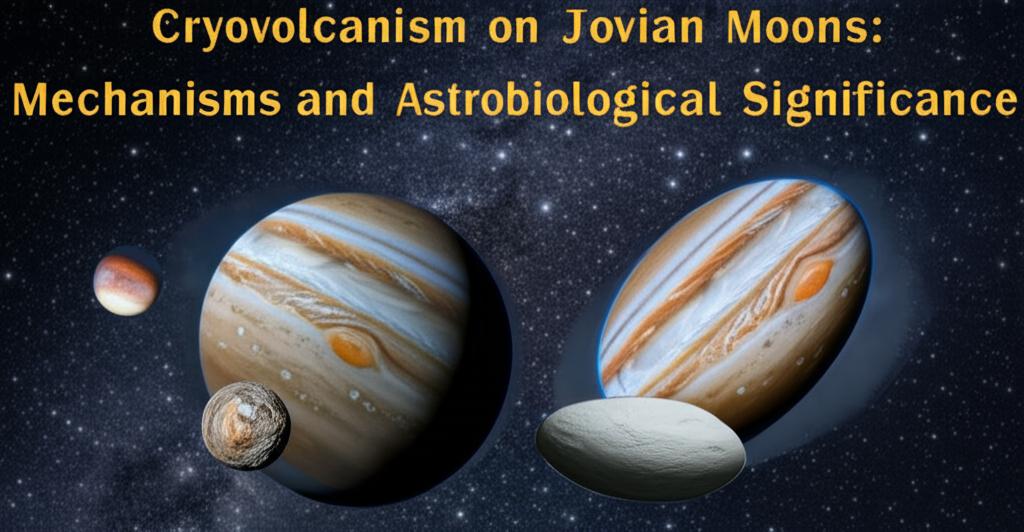Cryovolcanism, or ice volcanism, is a fascinating geological process observed on several of Jupiter's icy moons, as well as other celestial bodies in the outer solar system. Unlike terrestrial volcanoes that erupt molten rock, cryovolcanoes erupt volatile substances such as water, ammonia, or methane, which are liquid in the moon's interior but freeze upon reaching the frigid surface. This phenomenon plays a crucial role in shaping the surfaces of these moons and has profound implications for their potential habitability.
Mechanisms Driving Cryovolcanism
The primary driver behind cryovolcanism on Jovian moons like Europa and Ganymede is tidal heating. The immense gravitational pull of Jupiter, along with the gravitational interactions with other nearby moons, causes the interiors of these moons to flex and deform. This internal friction generates significant heat, which can melt subsurface ice, leading to the formation of vast liquid reservoirs or oceans beneath thick icy crusts. This process is particularly effective on moons in orbital resonance with other moons, such as Europa's 2:1 resonance with Io. The amount of tidal heating depends on factors like the moon's orbital eccentricity, its distance from Jupiter, and Jupiter's massive gravitational influence.
Another crucial factor is the internal composition and structure of these icy moons. The presence of substances like ammonia or salts can lower the melting point of water ice, making it easier for subsurface oceans to form and persist. These subsurface oceans then serve as the source for cryovolcanic eruptions. The pressurized liquid can be forced upwards through cracks, fissures, or vents in the moon's icy shell. The thickness and composition of this icy crust influence the style and frequency of these "ice lava" or cryomagma eruptions.
Some models propose that cryovolcanic eruptions, particularly on Europa, might not always originate from the deep global ocean. Instead, they could stem from pockets of salty water (brine) embedded within the icy shell itself. These brine pockets can migrate within the ice, driven by thermal gradients, and become concentrated. The eventual freezing of these pockets can generate immense pressure, leading to explosive eruptions that spew water vapor and ice particles into space.
Evidence and Observations
Evidence for cryovolcanism on Jovian moons comes from various observations:
- Europa: Shows features like "chaos terrain" (disrupted, blocky landscapes) and smooth plains, which are thought to be formed by the upwelling and eruption of subsurface water or slush. The Hubble Space Telescope has also detected evidence of water vapor plumes erupting from Europa's surface, potentially reaching heights of hundreds of kilometers.
- Ganymede: Jupiter's largest moon, exhibits grooved terrain and bright, smooth regions like Arbela Sulcus, which could be remnants of past cryovolcanic flows.
- Io: While the most volcanically active body in the solar system, Io's volcanism is driven by silicate magma due to more intense tidal heating, not cryovolcanism.
Upcoming missions like NASA's Europa Clipper (scheduled to arrive at Jupiter in 2030) and ESA's JUICE (Jupiter Icy Moons Explorer, arrived 2031 with a focus on Ganymede) are expected to provide much more detailed data. Europa Clipper, for instance, will fly by Europa multiple times and may even fly through any active plumes, directly sampling their composition.
Astrobiological Significance
Cryovolcanism on Jovian moons is of immense interest to astrobiologists because it directly links the potentially habitable subsurface liquid water environments with the surface.
- Subsurface Oceans as Habitats: The presence of liquid water is a key ingredient for life as we know it. Subsurface oceans on moons like Europa are protected from harsh surface radiation by thick ice shells, offering potentially stable environments.
- Transport of Materials and Energy: Cryovolcanism provides a mechanism for transporting materials and energy between the subsurface ocean and the surface. This could bring essential chemical nutrients from the moon's rocky interior or ocean floor – potentially from hydrothermal vents similar to those on Earth – to the surface, or cycle surface compounds back into the ocean. These hydrothermal vents, if they exist, could provide the necessary heat and chemical building blocks for microbial communities.
- Detecting Biosignatures: If life exists in these subsurface oceans, cryovolcanic plumes could carry evidence of that life (biosignatures) to the surface or into space where they could be detected by orbiting spacecraft. This makes these plumes prime targets for astrobiological exploration, potentially allowing us to sample the ocean's composition without having to drill through miles of ice.
- Expanding the Habitable Zone: The discovery of active cryovolcanism and subsurface oceans on icy moons significantly expands the traditional concept of the "habitable zone" around a star. It demonstrates that habitable environments could exist far from a star's warmth, sustained by internal heat sources like tidal forces.
While some models suggest that plumes might originate from shallower brine pockets within the ice shell rather than the deep ocean, even these shallower environments could offer insights into the moon's chemistry and processes that could support life. Studying these icy worlds and their cryovolcanic activity provides crucial insights into the potential for life to emerge and thrive in extreme environments, informing our broader understanding of the origins and distribution of life in the universe.
Future missions will continue to peel back the layers of mystery surrounding these frozen worlds, offering unprecedented opportunities to examine their interiors and assess their astrobiological potential.

